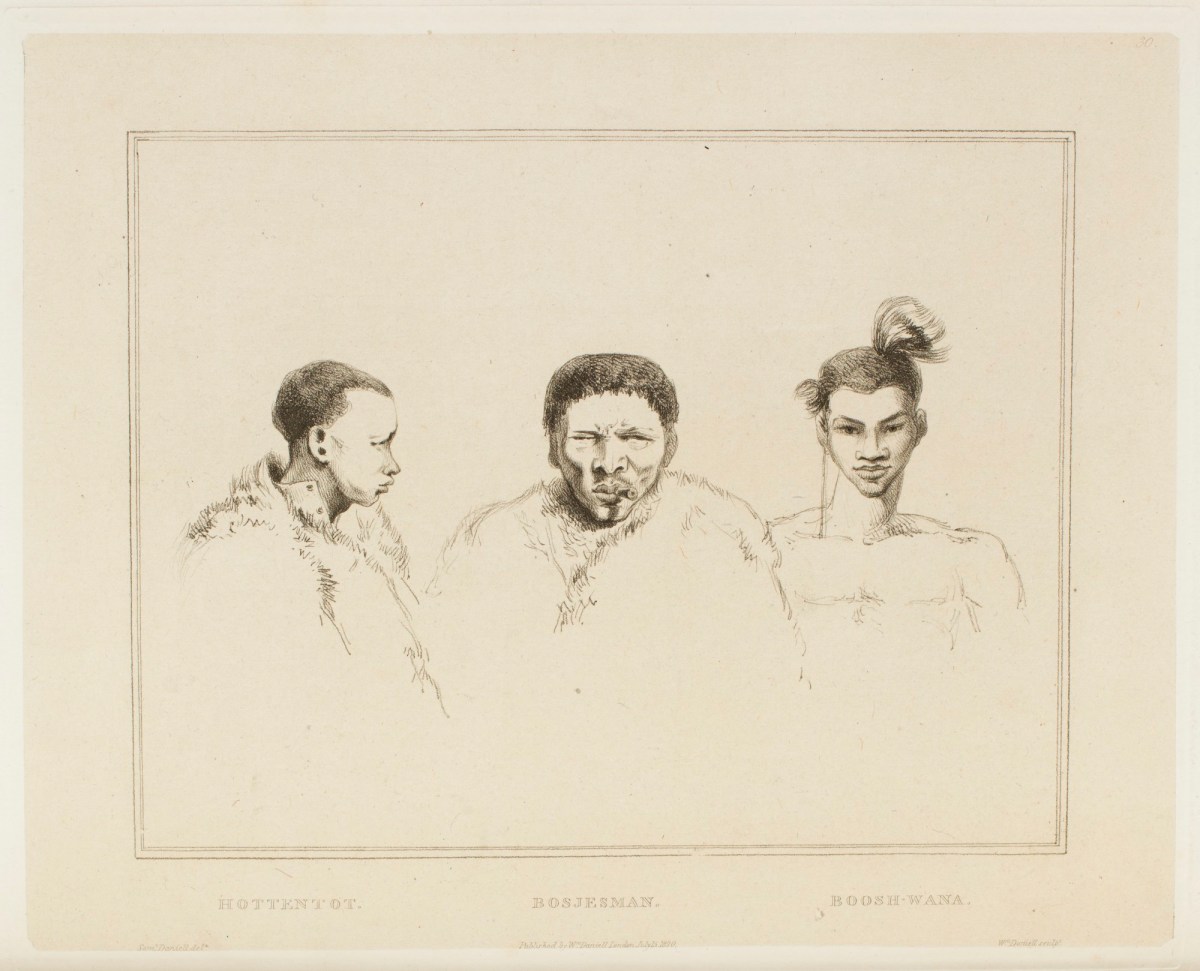
Samuel Daniell, Portrait of a KhoiKhoi, a San and Tswana men ('Hottentot, Bosjesman, Booshwana'), 1820.
Soft-ground etching on india paper. 279 mm x 229 mm. © Photo: Royal Academy of Arts, London.
This image is not available to download. To licence this image for commercial purposes, contact our Picture Library at picturelibrary@royalacademy.org.uk
Portrait of a KhoiKhoi, a San and Tswana men ('Hottentot, Bosjesman, Booshwana'), 1820
Samuel Daniell (1775 - 1811)
RA Collection: Art
This title or caption of this object contains language that is upsetting and offensive. We have kept the original wording – given by the artist or creator – to preserve its historical significance and, where possible, we have tried to provide additional information to contextualise the object’s content, production and meaning in the society in which it was created.
We continuously work to improve the documentation and presentation of our online Collections. If you have any comments or additional information about this – or another – object, please contact us at library@royalacademy.org.uk.
This image depicts three men, from the Khoikhoi, San and Tswana peoples respectively. These are indigenous groups native to southern Africa, in areas that are now Botswana and South Africa. This etching is an illustration from a book titled Sketches representing the Native Tribes, Animals and Scenery of Southern Africa (1820), originally drawn by Samuel Daniell and published posthumously by his brother William Daniell RA. The book was part of a British colonial tradition of ethnographic research and demonstrates deep inherent racial prejudice, seeking to categorise indigenous groups into a Western-imposed knowledge structure. Samuel Daniell based this drawing on his encounters with indigenous people when he travelled to South Africa between 1799 and 1802. This expedition was only possible due to colonisation of the land and peoples by Dutch and British forces.
The illustration includes the caption ‘Hottentot’ which is an historic term used to refer to the Khoekhoe people. Today ‘Hottentot’ is an offensive and derogatory term in the English language. When this illustration was published, the term was used by colonialists to identify this specific ethnic group, but throughout the 18th and 19th centuries it became increasingly pejorative and took on connotations of violence and ‘uncivilised’ behaviour.
The word ‘Bosjesman’, referring to the man in the centre, is a term imposed by the Dutch colonialists of southern Africa, meaning ‘outlaw’ or ‘bandit’. This was in reference to the San resistance to colonial control and violence. The word became widely used by British and Dutch colonialists to refer to the San people and is the root of the outdated English term ‘Bushmen’.
The caption ‘Boosh-wana’ is an historic English-language version of the word Tswana. Even in the context of the 19th century, the labelling of indigenous people according to Western groupings was a form of colonial control that homogenised complex and varied cultures present among the populations of southern Africa.
Object details
279 mm x 229 mm
Sketches representing the native tribes, animals and scenery of Southern Africa / from drawings made by the late Mr. Samuel Daniell, engraved by William Daniell - London: 1820
Start exploring the RA Collection
- Explore art works, paint-smeared palettes, scribbled letters and more...
- Artists and architects have run the RA for 250 years.
Our Collection is a record of them.



